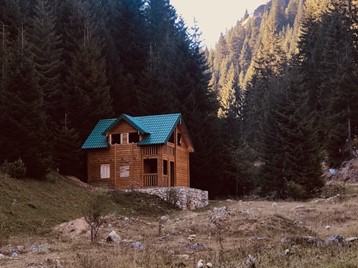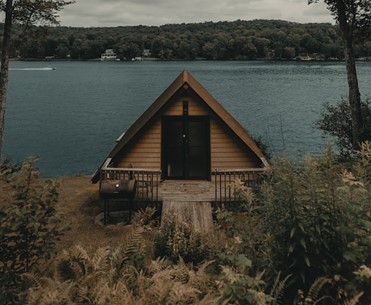Joshua Kelly of North Andover, Massachusetts is a graduate of Syracuse University with a professional degree in Architecture. He is a licensed Architect that brings over 25 years of diverse experience in the fields of Architecture, Real Estate Development, Construction Management and Building Envelope Consulting. In the following article, Josh Kelly navigates the zoning regulations and building codes of tiny homes.
The small footprint of tiny homes continues to make a big impact.
In the U.S. alone there are about 10,000 tiny homes with the average size being 100 to 400 square feet. Driven primarily by affordability, efficiency, and eco-friendliness, the tiny home is expected to grow about 5% each year through 2027. Additionally, about 86% of American homeowners say they would consider making their first home a tiny home.
Whether a tiny home is stationary or on wheels, they are seen as an essential part of a minimalist lifestyle. And while they may not come with some of the headaches and hassles of purchasing and living in an average-sized home, builders and owners of tiny homes still have to contend with legal rules and regulations guiding the industry.
Josh Kelly Explains the Legal Basics
Josh Kelly of Massachusetts reports the good news: It’s legal to build or live in a tiny home in all 50 states.
The not-so-great news: Each state comes with its own rules and regulations, and some can be very restrictive. Some of these regulations depend on individual municipality and county rules as well.
The rules vary wildly. Sometimes a tiny home falls under the classification of a shed or a recreational vehicle. In others, it’s an accessory dwelling unit. If a tiny home is on wheels, crossing state lines means an owner usually needs to have a towing license.
One thing that is standard across the country is that each state has set a minimum number of square footage for a dwelling to be considered a home. If a tiny house falls below that number, one may not live there legally.
Adding to the complexity: most states require that residents have a stationary address, so it may not be possible to live on the road in a tiny house for extended periods.
Joshua Kelly Architect says that the rise of the tiny house movement over the past five years has come with extensive revamps of zoning laws within communities across the U.S. Generally, the 2021 International Residential Code defines a tiny house as 400 square feet or less (not including lofts).
It’s just one of many standards that everyone from homebuyers and lawmakers to buildings, designers, and code enforcement officials have to follow when tiny homes are involved.
Regulations, Codes, and More
To be considered an option for housing, tiny homes need to meet numerous safety, health, and efficiency rules tied to permanent housing structures.
Tiny homes on wheels with a chassis are not exempt. They usually must meet additional requirements regarding transportation. Homes on wheels must follow standards of safety and manufactured home construction rules set by the U.S. Department of Housing and Urban Development.
Joshua Kelly Architect explains that some of the most common legal codes and regulations recently updated by the ICC in 2023 for tiny homes include:
 • Planning Phase
• Planning Phase
Tiny homes are subject to the same type of inspection and plan review used with factory-built, modular, and pre-manufactured residences.
• Compliance Notice
Joshua Kelly reports that when a tiny home is found to comply with local or state codes concerning the construction, it must post an insignia on the property indicating its compliance.
• Local control
Town or city governments have control of many aspects of a tiny home, including zoning issues, utility hookups, installing foundations, and subdivision and zoning issues.
Pay the Most Attention to Individual Zoning Laws and Building Codes
A town or municipality has very strict control over how any land is used in its jurisdiction. It becomes complicated when tiny homes do not meet a single-family residential zone’s requirement for minimum square footage.
Some states allow these structures to be placed behind a traditional home and classify them as accessory dwelling units. However, some cities have established new zones to accommodate either individual tiny homes or entire tiny home communities.
Joshua Kelly explains that building codes are extensive, but they were created for average homes and not tiny ones. Some codes outline requirements that simply do not apply to a tiny home, such as the width of stairs or the height of ceilings.
Most building codes have been amended by many states and cities to address homes 400 square feet or less. Each code is different, but they commonly include regulations for lofts, emergency escape needs, compact stairs, headroom, and handrails. Some of these codes only apply to tiny homes on foundations; some areas do not allow tiny homes on wheels at all.
However, Joshua Kelly says that the popularity of tiny homes on wheels means states are adding adjustments to building codes or creating new codes just for tiny homes not on permanent foundations. For example, South Dakota has a new zoning ordinance that dictates tiny homes on wheels are allowed as long as they have bottom skirting and are tied down adequately.








